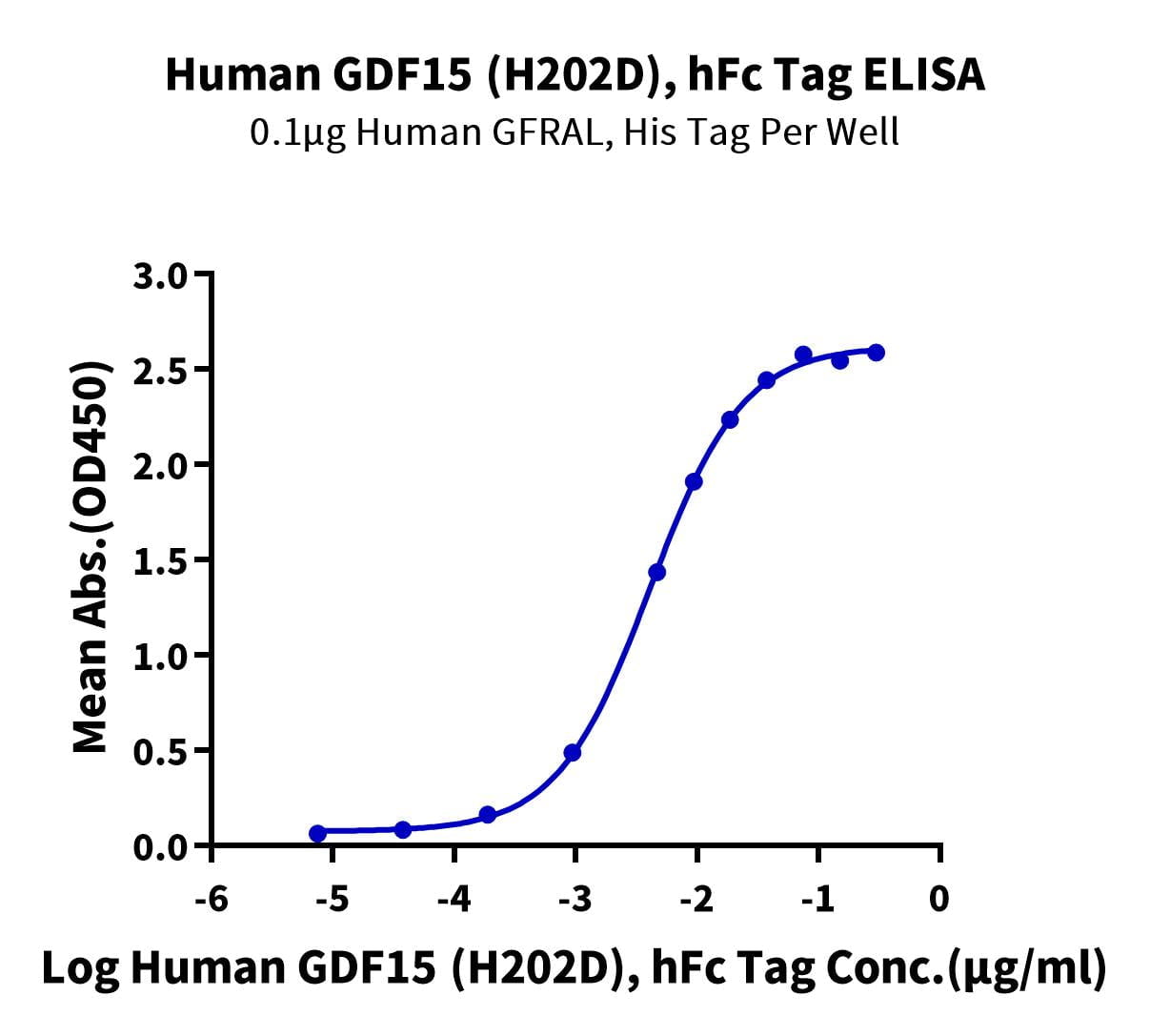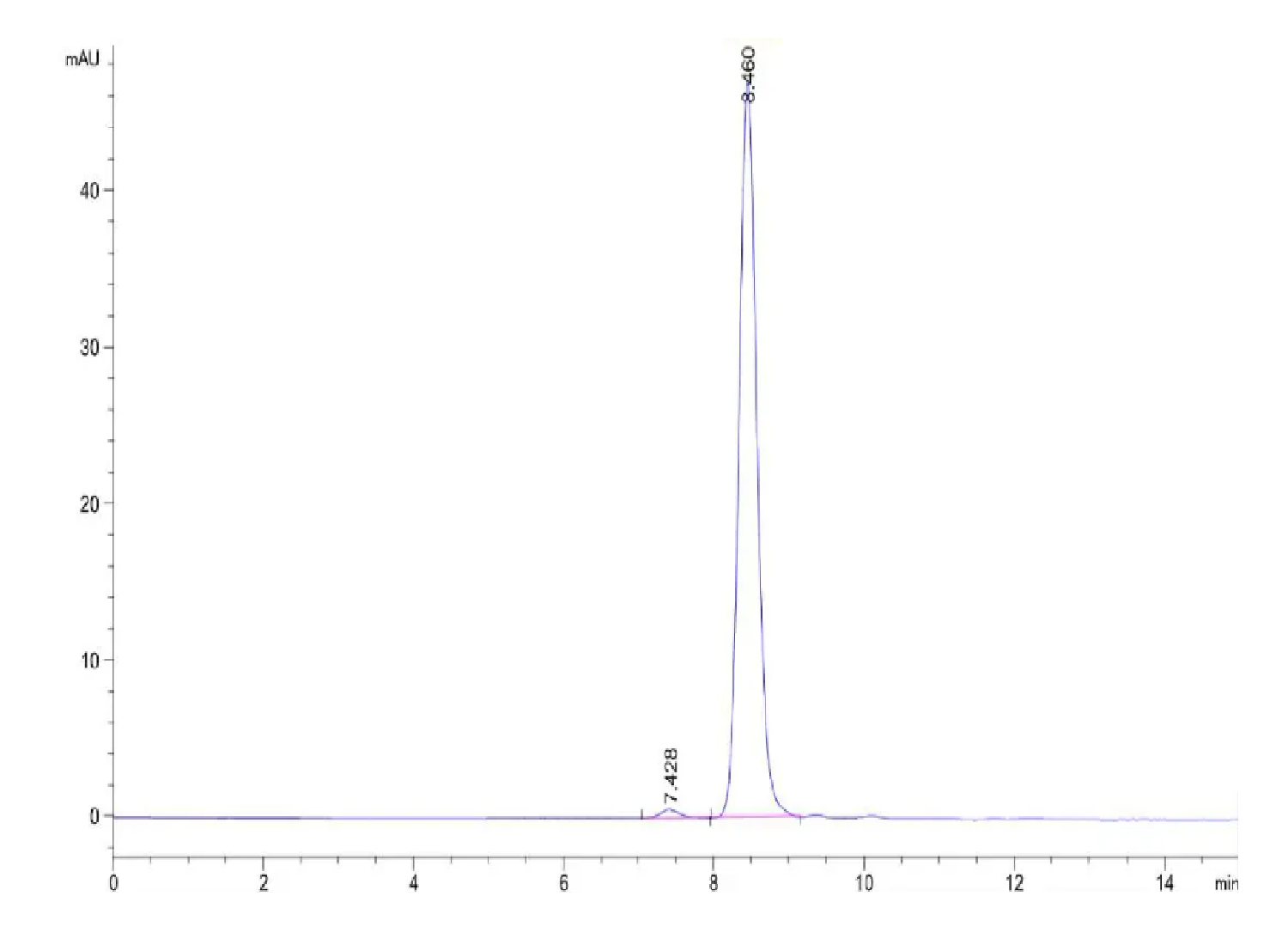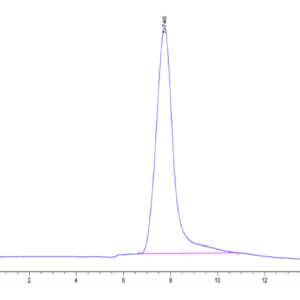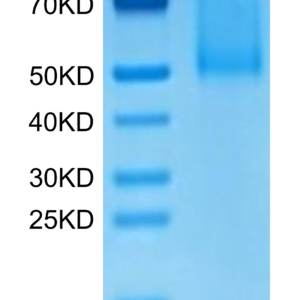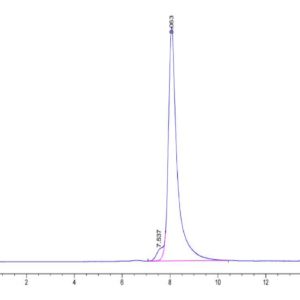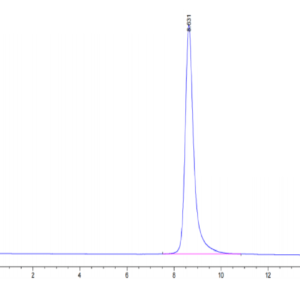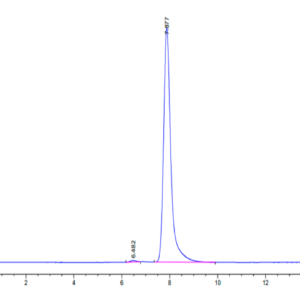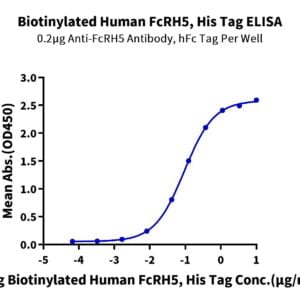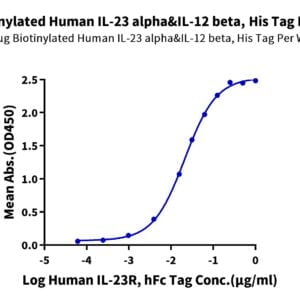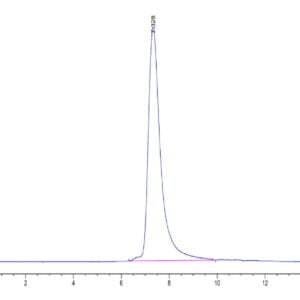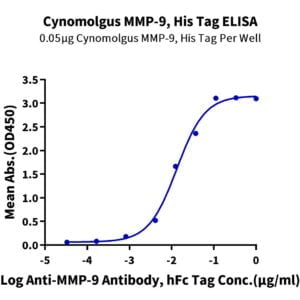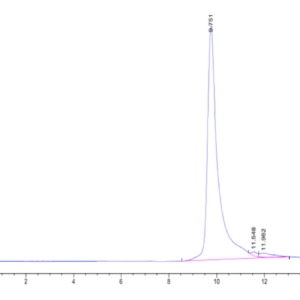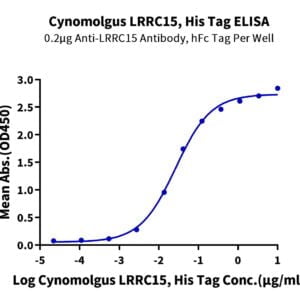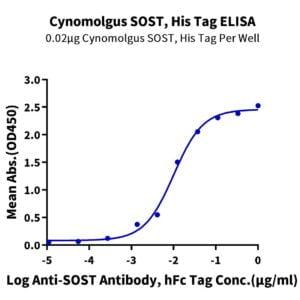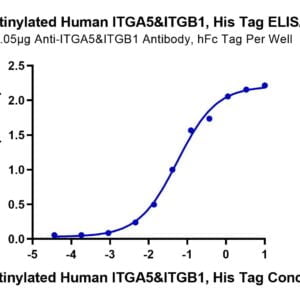| Weight | 1 lbs |
|---|---|
| Dimensions | 9 × 5 × 2 in |
| accession | Q99988 |
| express system | HEK293 |
| product tag | N-hFc |
| purity | > 95% as determined by Tris-Bis PAGE;> 95% as determined by HPLC |
| background | Growth and differentiation factor 15 (GDF15) is an inflammation-associated hormone with poorly defined biology. Here, we investigated the role of GDF15 in bacterial and viral infections. Inflammation induced GDF15, and that GDF15 was necessary for surviving both bacterial and viral infections, as well as sepsis. The protective effects of GDF15 were largely independent of pathogen control or the magnitude of inflammatory response, suggesting a role in disease tolerance. |
| molecular weight | The protein has a predicted MW of 37.88 kDa. Due to glycosylation, the protein migrates to 40-50 kDa based on Tris-Bis PAGE result. |
| available size | 100 µg, 500 µg |
| endotoxin | Less than 1EU per μg by the LAL method. |
Human GDF15 (H202D) Protein 2325
$375.00 – $1,250.00
Summary
- Expression: HEK293
- Functional: Yes (ELISA)
- Amino Acid Range: Ala197-Ile308 (H202D)
Human GDF15 (H202D) Protein 2325
| protein |
|---|
| Size and concentration 100, 500µg and lyophilized |
| Form Lyophilized |
| Storage Instructions Valid for 12 months from date of receipt when stored at -80°C. Recommend to aliquot the protein into smaller quantities for optimal storage. Please minimize freeze-thaw cycles. |
| Storage buffer Shipped at ambient temperature. |
| Purity > 95% as determined by Tris-Bis PAGE |
| target relevance |
|---|
| Growth and differentiation factor 15 (GDF15) is an inflammation-associated hormone with poorly defined biology. Here, we investigated the role of GDF15 in bacterial and viral infections. Inflammation induced GDF15, and that GDF15 was necessary for surviving both bacterial and viral infections, as well as sepsis. The protective effects of GDF15 were largely independent of pathogen control or the magnitude of inflammatory response, suggesting a role in disease tolerance. |
| Protein names Growth/differentiation factor 15 (GDF-15) (Macrophage inhibitory cytokine 1) (MIC-1) (NSAID-activated gene 1 protein) (NAG-1) (NSAID-regulated gene 1 protein) (NRG-1) (Placental TGF-beta) (Placental bone morphogenetic protein) (Prostate differentiation factor) |
| Gene names GDF15,GDF15 MIC1 PDF PLAB PTGFB |
| Protein family TGF-beta family |
| Mass 9606Da |
| Function Hormone produced in response to various stresses to confer information about those stresses to the brain, and trigger an aversive response, characterized by nausea, vomitting, and/or loss of appetite (PubMed:23468844, PubMed:24971956, PubMed:28846097, PubMed:28846098, PubMed:28846099, PubMed:28953886, PubMed:29046435, PubMed:30639358, PubMed:31875646, PubMed:33589633, PubMed:38092039). The aversive response is both required to reduce continuing exposure to those stresses at the time of exposure and to promote avoidance behavior in the future (PubMed:30639358, PubMed:33589633, PubMed:38092039). Acts by binding to its receptor, GFRAL, activating GFRAL-expressing neurons localized in the area postrema and nucleus tractus solitarius of the brainstem (PubMed:28846097, PubMed:28846098, PubMed:28846099, PubMed:28953886, PubMed:31535977). It then triggers the activation of neurons localized within the parabrachial nucleus and central amygdala, which constitutes part of the 'emergency circuit' that shapes responses to stressful conditions (PubMed:28953886). The GDF15-GFRAL signal induces expression of genes involved in metabolism, such as lipid metabolism in adipose tissues (PubMed:31402172). Required for avoidance behavior in response to food allergens: induced downstream of mast cell activation to promote aversion and minimize harmful effects of exposure to noxious substances (By similarity). In addition to suppress appetite, also promotes weight loss by enhancing energy expenditure in muscle: acts by increasing calcium futile cycling in muscle (By similarity). Contributes to the effect of metformin, an anti-diabetic drug, on appetite reduction and weight loss: produced in the kidney in response to metformin treatment, thereby activating the GDF15-GFRAL response, leading to reduced appetite and weight (PubMed:31875646, PubMed:37060902). The contribution of GDF15 to weight loss following metformin treatment is however limited and subject to discussion (PubMed:36001956). Produced in response to anticancer drugs, such as camptothecin or cisplatin, promoting nausea, vomitting and contributing to malnutrition (By similarity). Overproduced in many cancers, promoting anorexia in cancer (cachexia) (PubMed:32661391). Responsible for the risk of nausea and vomitting during pregnancy: high levels of GDF15 during pregnancy, mostly originating from the fetus, are associated with increased nausea and vomitting (PubMed:38092039). Maternal sensitivity to nausea is probably determined by pre-pregnancy exposure to GDF15, women with naturally high level of GDF15 being less susceptible to nausea than women with low levels of GDF15 before pregnancy (PubMed:38092039). Promotes metabolic adaptation in response to systemic inflammation caused by bacterial and viral infections in order to promote tissue tolerance and prevent tissue damage (PubMed:31402172). Required for tissue tolerance in response to myocardial infarction by acting as an inhibitor of leukocyte integring activation, thereby protecting against cardiac rupture (By similarity). Inhibits growth hormone signaling on hepatocytes (By similarity). |
| Subellular location Secreted. Note=Secreted in the plasma. |
| Tissues Detected in plasma (at protein level) (PubMed:28572090, PubMed:29046435). Highly expressed in placenta, with lower levels in prostate and colon and some expression in kidney (PubMed:37060902, PubMed:9348093). |
| Structure Homodimer; disulfide-linked (PubMed:29046435, PubMed:31535977). Interacts with GFRAL and RET; ligand of GFRAL, which mediates GDF15 internalization and cellular signaling through interaction with RET via the formation of a 2:2:2 ternary complex composed of GDF15, GFRAL and RET (PubMed:28846097, PubMed:28846098, PubMed:28846099, PubMed:28953886, PubMed:31535977). |
| Target Relevance information above includes information from UniProt accession: Q99988 |
| The UniProt Consortium |
Data
Publications
Publications
| pmid | title | authors | citation |
|---|---|---|---|
| We haven't added any publications to our database yet. | |||
Protocols
| relevant to this product |
|---|
Documents
| # | ||
|---|---|---|
| Please enter your product and batch number here to retrieve product datasheet, SDS, and QC information. | ||
